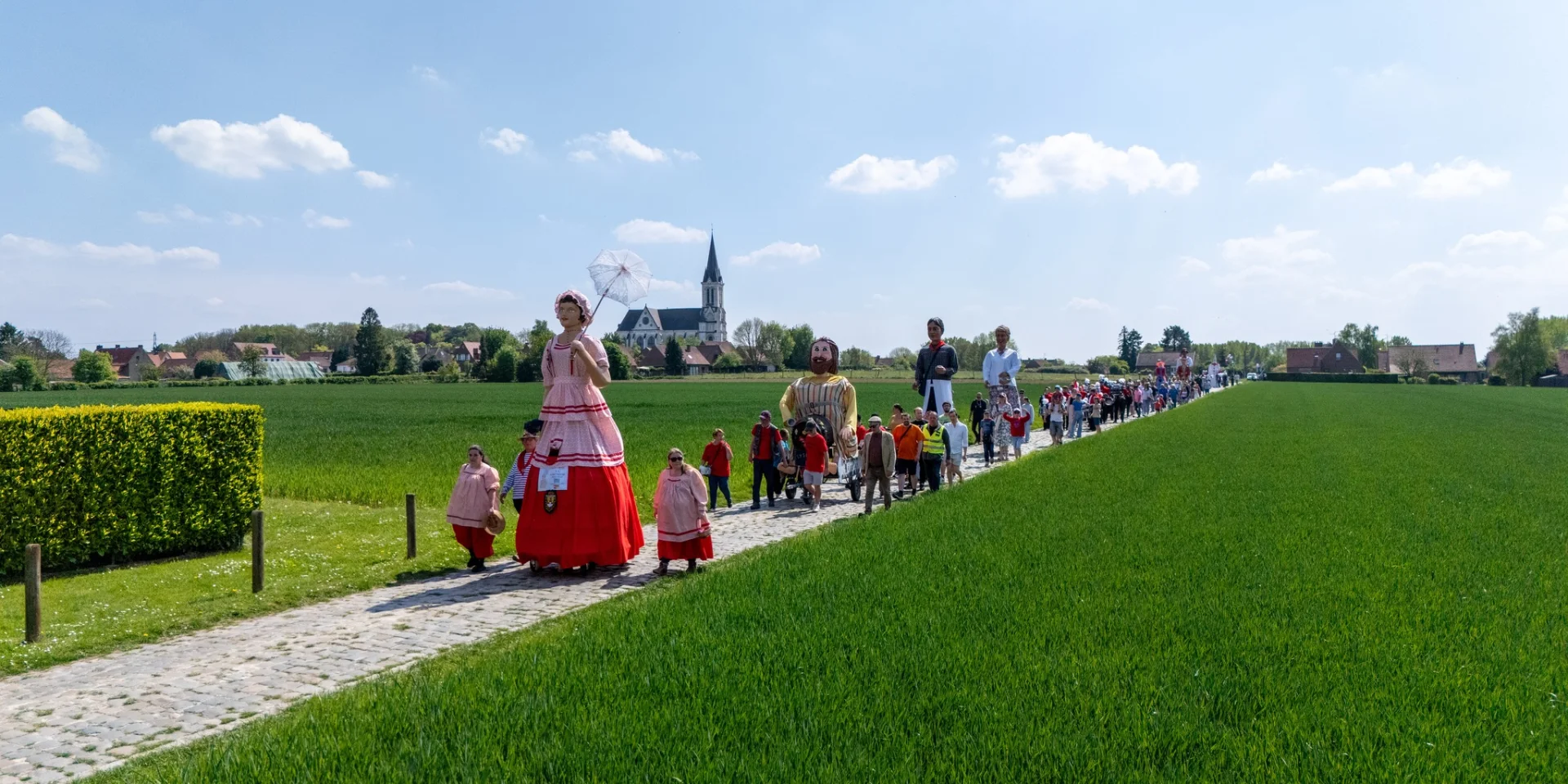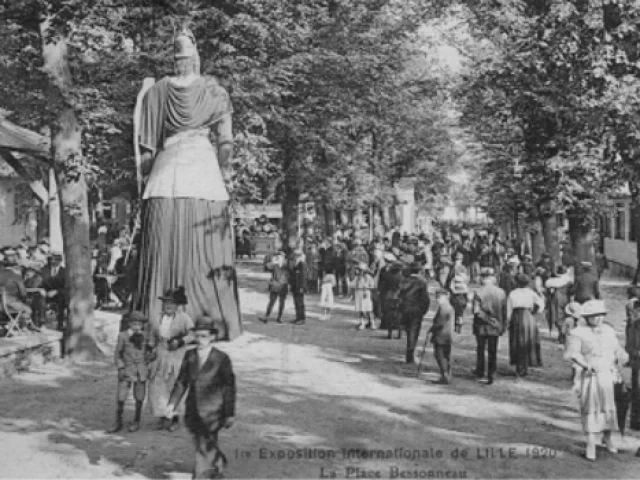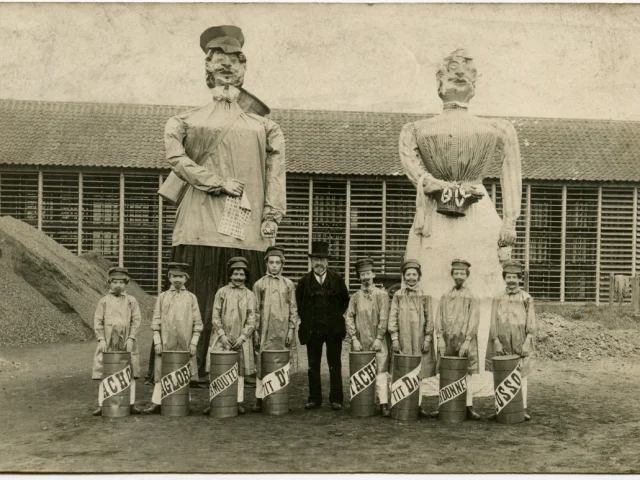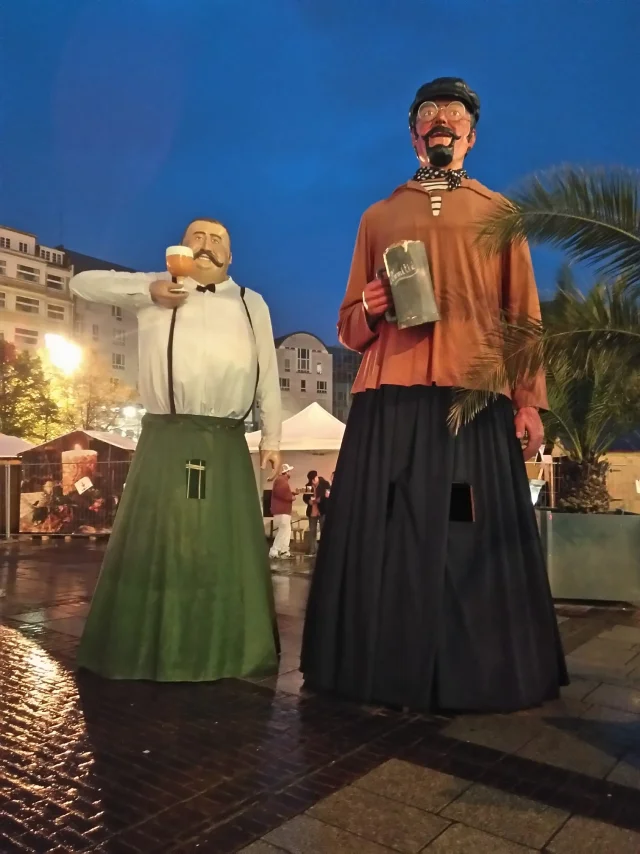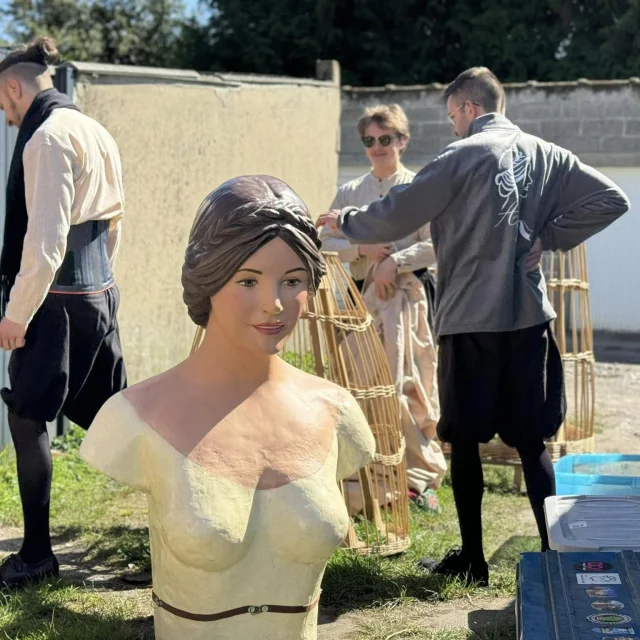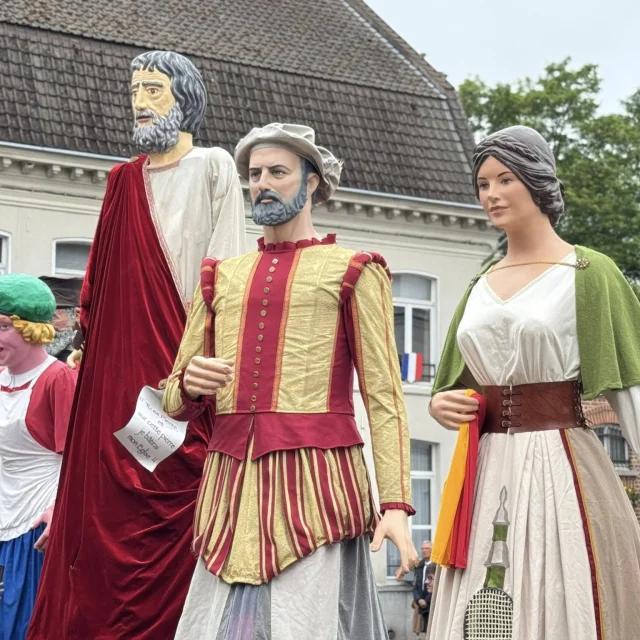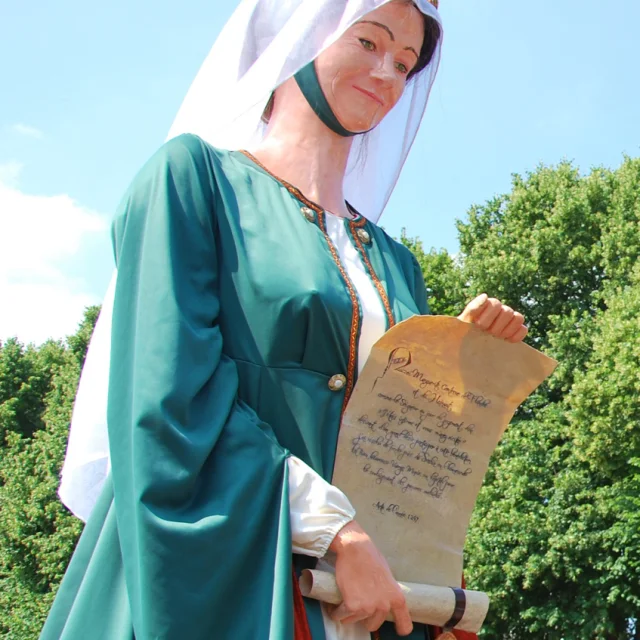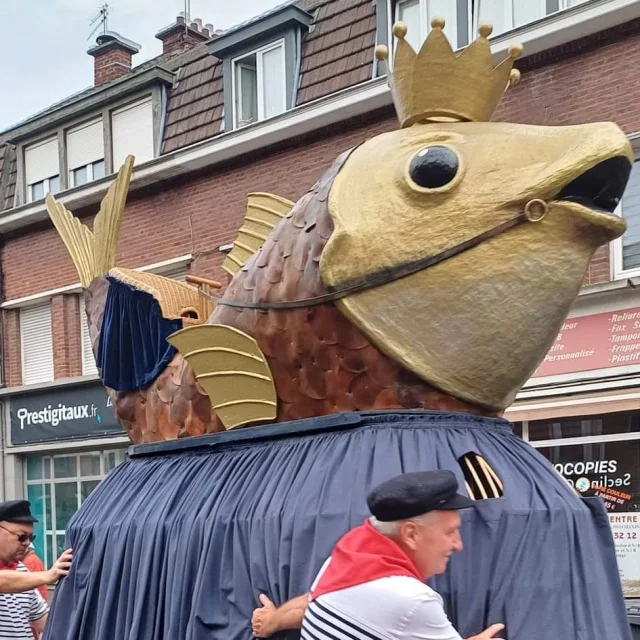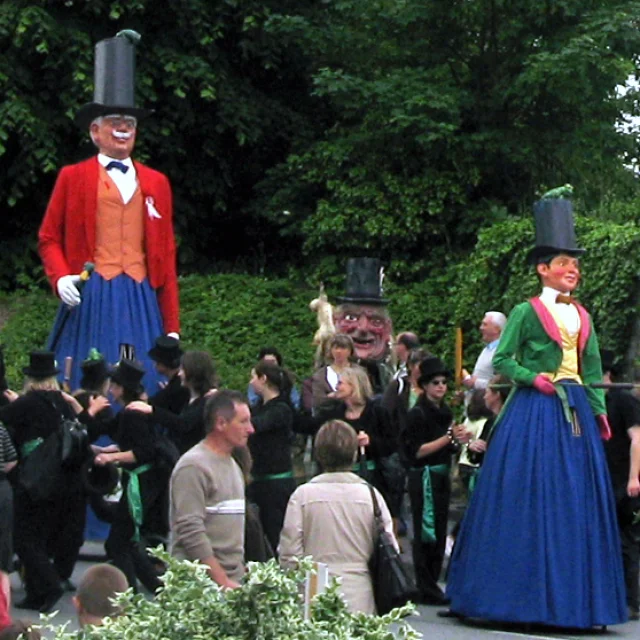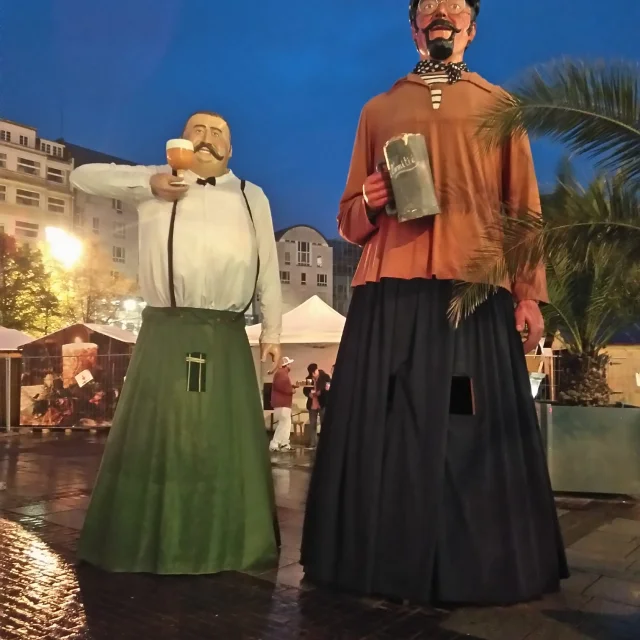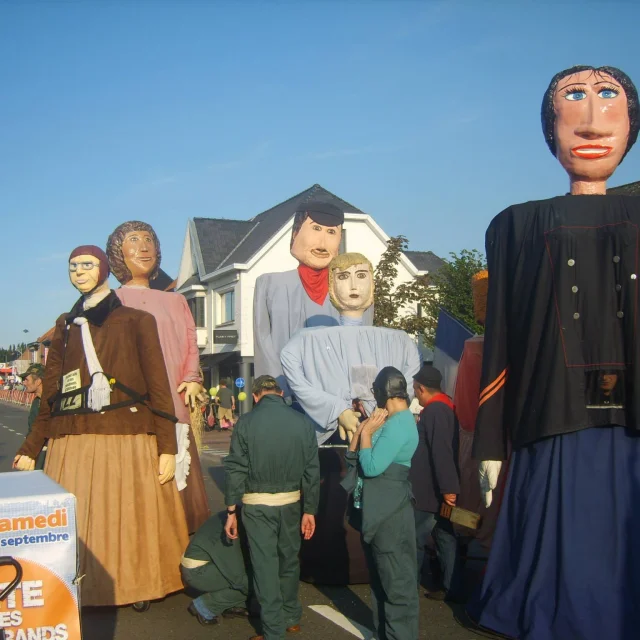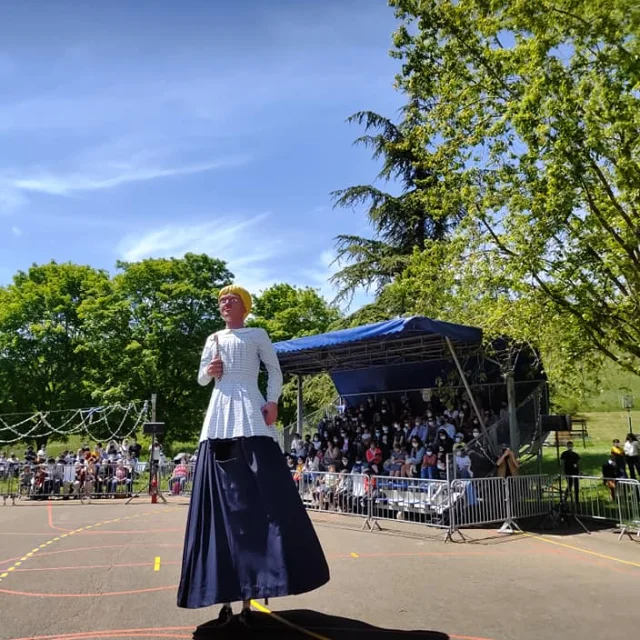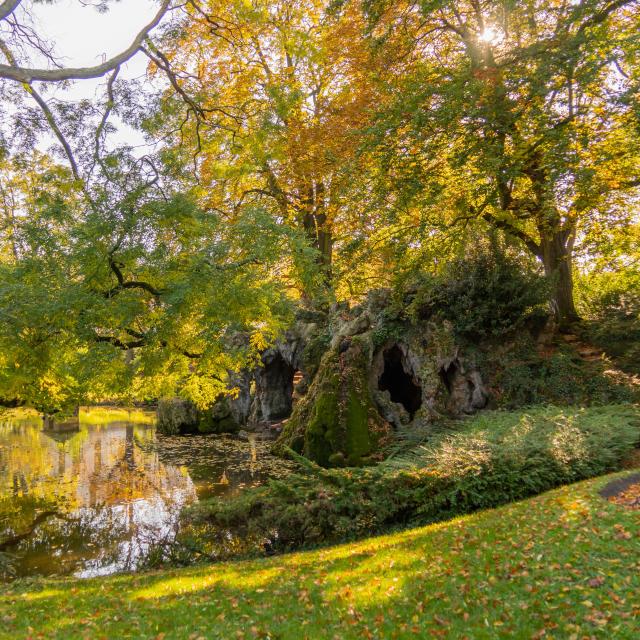1. 👶The youngest: Petit Jules – Bondues Born in 2023, Petit Jules completes the giant Bondues family with a healthy dose of tenderness. 💬 “He’s a mini-giant, but already a great source of pride for the children of Bondues.”
2. 👑 The noblest: Jacques & Françoise de Luxembourg – Armentières Inspired by a historic lineage, these giant brother and sister are the stars of the Fête des Nieulles, an emblematic celebration since the 16th century. 🕊️ Carried by hand, they are a reminder of the medieval history and prestige of Armentières.
3 🧵 The most textile: Jacques le Tisserand – Halluin A tribute to the trades of yesteryear, it symbolises an entire working-class tradition in the North. Always dressed like a craftsman proud of his trade, he embodies Halluin’s industrial past.
4 🎺 The most melodious: Léon le Violoniste – Wambrechies Between two notes, Léon leads the parade like a conductor. A real ray of sunshine in the cavalcades. 🎶 His giant violin echoes from village to village.
5. 🌾 The most rural: Jean de la Cense – Fromelles A farmer proud of his straw bales and his land, Jean marches with calm good humour. 🐓 He is the embodiment of the Weppes countryside at its most gentle.
6. 🎉 The most festive: Jojo – La Bassée Colourful, smiling and always ready for a round of pub crawls, Jojo is a hit at popular dances. 🍻 He’s THE giant of great atmospheres.
7. 🧺 The oldest: Rosalie la Lavandière – Quesnoy-sur-Deûle She embodies everyday gestures, household traditions and the world of women in the North in days gone by. 🧼 Her apron tells more than folklore: it’s a forgotten reality.
8. 📚 The most educational: P’tit Georges – Marquette-lez-Lille Designed for use in schools, this little giant teaches local history in an educational way. 👦 A lively tool for talking about heritage to the very young.
9. 🚶♂️ The most well-travelled: Léonard – Erquinghem-Lys He travels through festivals and communes, weaving links between towns and people. 🌍 A giant ambassador who knows the area’s roads inside out.
10. 🏰 The greatest builders: Phinaert & Lydéric – The founding giants of Lille One is a cruel ogre who ruled the marshes. The other, a vengeful orphan raised by a doe. Together, they wrote the territory’s greatest legend. According to the medieval story, Lyderic defeated Phinaert in a duel and founded the city of Lille on the conquered land.
🏛️ This myth, handed down since the Middle Ages, still runs through processions today.
👣 Their giants are the founding pillars of the Flemish imagination, present in Wambrechies, Comines or even in certain symbolic processions of the metropolis. 💬 “Lille is said to have been born of a fight between two giants. Since then, they still stand watch, high as towers, over the land of Flanders.”comme des tours, sur la terre des Flandres.”
